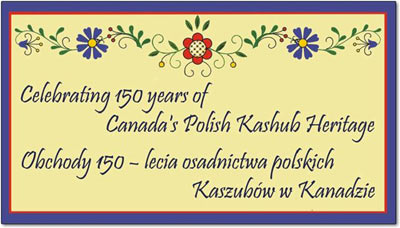|
Shirley Mask Connolly, curator of Polish Kashub Heritage Museum in Wilno, teamed up with Ewa Zadarnowski President of the Polish-Canadian Women's Federation, Ottawa Branch, to co-ordinate this
special 150th Anniversary Exhibit at the Bytown Museum in celebration of this unique heritage. The Exhibit mounted by Shirley Mask Connolly features a variety of large display panels using photographs
and copies of original documentation to describe the arrival of the first Kashubs in Canada in 1858 and their struggle to survive on land with little agricultural potential. Included are emigration
documents as well as reports from the Canadian Government Immigration Department [then under the Department of Agriculture]. The Kashubs came to Canada in hope of a better life and land to farm.
They arrived here penniless but were sustained by their strong faith. Through sheer determination, they endured great hardship and deprivation and survived in the wild free grant lands of the Opeongo
Colonization Road and the nearby townships. The exhibit at the Bytown also includes photographs of Kashubian immigrant families, their first Canadian homes and farms, as well as an antique wedding
portrait, Crown Land Reports and a Free Grant deed. Artifacts include colourful contemporary Kashubian revival pottery and embroidery from the Wilno Museum juxtaposed with a few treasures of the
pioneer Kashubian home - primarily religious objects such as their precious Polish hymn books [Spiewniks], prayer books, prayer beads and holy pictures. Also on display is the richly embroidered
"ceremonial" costume of a Kashubian woman.
 |
The display fills one room in the historic stone building which dates back to the early days of Bytown and is indeed a fitting place to give tribute to the rich cultural heritage and proud
inheritance of a unique group of Canadians who can trace their roots back a century and a half - who passed through Ottawa on their way to the wilds of the Ottawa Valley starting in 1858 and
whose culture endures to the present day. The Exhibit continues until June 22, 2008 at the Community Gallery in the Bytown Museum, located alongside the Rideau Canal where it links
with the Ottawa River, and then will be moved [in part] upriver to the Bonnechere and to the McDougall Mill Museum in Renfrew for the month of July, 2008.
|